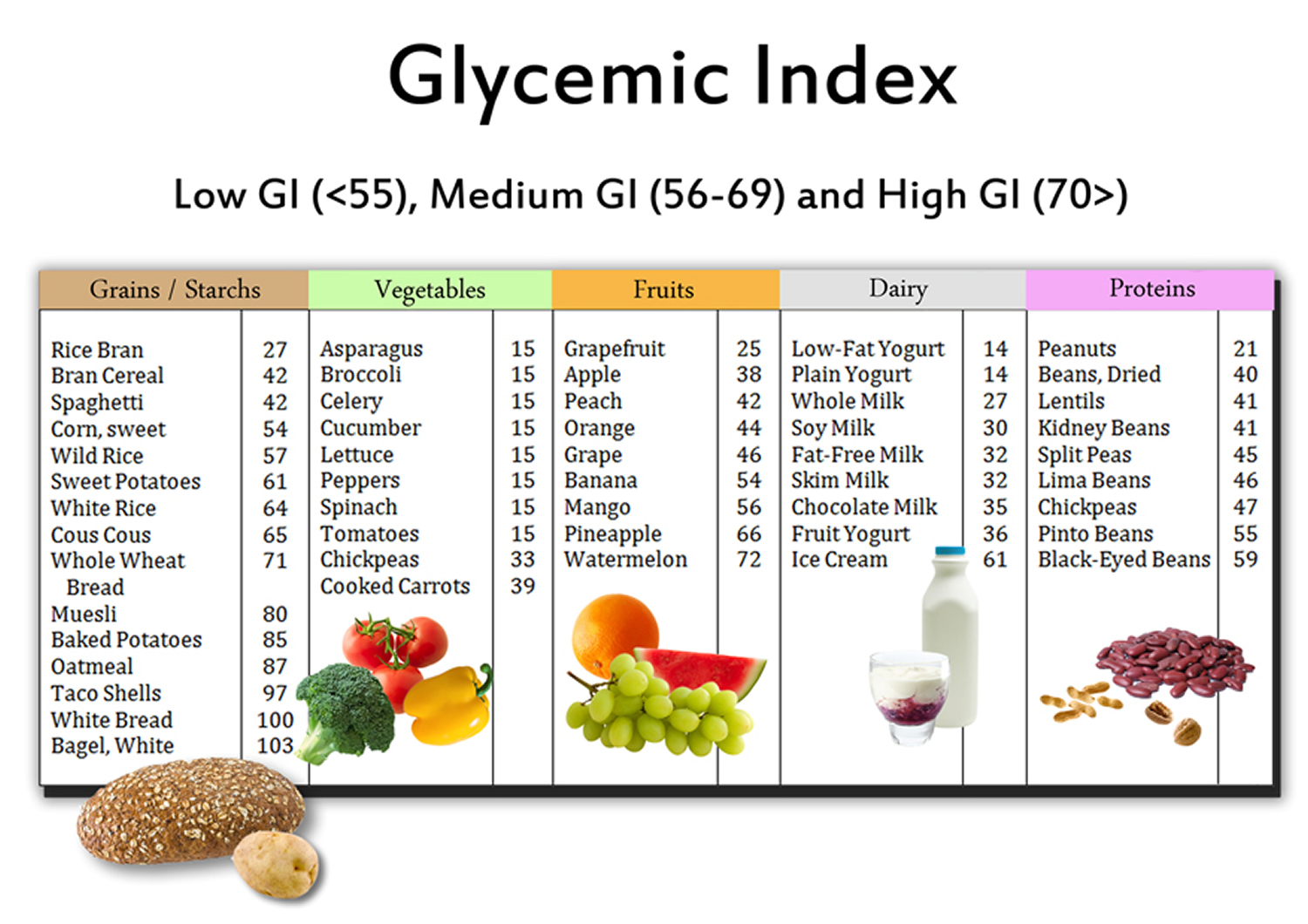
These are typically rich in fiber protein andor fat. A low-glycemic diet can help you control your weight by minimizing spikes in your blood sugar and insulin levels.
Low-glycemic diets have also been linked to reduced risks for cancer heart disease and other conditions.
What does low glycemic index mean. What is low Gi. The Glycemic Index Gi is a tool that measures how carbohydrates affect blood glucose levels. It then ranks the quality of carbohydrates based on this score.
Carbohydrates are an essential part of our diet since they provide fuel for the brain. What It Is and How to Use It Low glycemic diet. The low glycemic diet involves swapping out foods with a high GI for those with a lower GI.
Glycemic index of foods. Determining the GI of foods that you often eat can be useful if. If you have diabetes its useful to understand the glycaemic index because eating foods with low GI ratings can help control blood glucose.
However other factors must also be taken into account. Research has shown that the amount of carbohydrate you eat rather than its GI rating has the biggest influence on blood glucose levels after meals. What Does Low-Glycemic Diet Mean.
The glycemic index helps determine how a particular type of food affects the glucose levels in the blood. Each type of food has its own glycemic index which is compared to pure sugar. Pure sugar has a glycemic index of 100.
This means that pure sugar is rapidly broken down into glucose. Your guide to finding low GI foods to keep your blood sugar stable Harvard Medical Schools Healthbeat explains that the glycemic index GI of a food is a measure of how a specific food with carbohydrates causes blood sugar to rise. The low glycemic low GI diet is based on the concept of the glycemic index GI.
Studies have shown that the low GI diet may result in weight loss reduce blood sugar levels and lower the. Low glycemic index GI of 55 or less. Most fruits and vegetables beans minimally processed grains pasta low-fat dairy foods and nuts.
Moderate glycemic index GI 56 to 69. White and sweet potatoes corn white rice couscous breakfast cereals such. Low Carbohydrates and.
People often confuse a low carbohydrate diet with a low GI diet. For optimum health the evidence clearly indicates that lower GI foods and diets are not just good for glycemic control but also linked to reduced risk of chronic disease. Lower Carbohydrate does not mean Lower GI.
A low-glycemic diet can help you control your weight by minimizing spikes in your blood sugar and insulin levels. This is particularly important if you have type 2 diabetes or at risk of developing it. Low-glycemic diets have also been linked to reduced risks for cancer heart disease and other conditions.
Eight principles of low-glycemic eating. A low glycemic diet uses the glycemic index to determine which foods someone can eat. Focusing only on low glycemic foods could mean that someone eats foods that are higher in.
For example a candy bar or cookie might have a low glycemic index because of very high fat content but contain lots of calories along with high levels of saturated fats and a large dose of table sugar with few healthy nutrients. Clearly then using glycemic index ALONE is NOT a smart way to choose your foods. Updated March 1 2017.
Pretzels for example have a glycemic index of 83. Meanwhile foods with a low GI are digested and absorbed at a slower rate and subsequently cause a slower rise in blood sugar levels. These are typically rich in fiber protein andor fat.
Low Glycemic Index 55 or less Choose Most Often Medium Glycemic Index 56 to 69 Choose Less Often High Glycemic Index 70 or more Choose Least Often Baked Beans. This does not mean they cannot be included as part of a healthy diet. Examples include green vegetables lemons and some low-carbohydrate drinks.
The Glycemic Index Foundation suggest that aiming for an average dietary GI score of 45 may offer the most significant health benefits. The glycemic index or GI rates foods on a scale of 1 to 100 based on how they affect your blood sugar. Low-glycemic index foods have a glycemic index value less than 55.
These foods take a while to break down in your gut resulting in a steady increase in blood sugar. Dr Rajiv Kovil is a diabetologist and founder of the Diabetes care cent. But what does it really mean.
And how important is it for your health. What is a low glycemic diet. Very simply the Glycemic Index is a scientific ranking of how the foods we eat affect our blood sugar levels in the 2 or 3 hours after eating.
This index is measured against pure glucose which has a value of 100 on the index.
